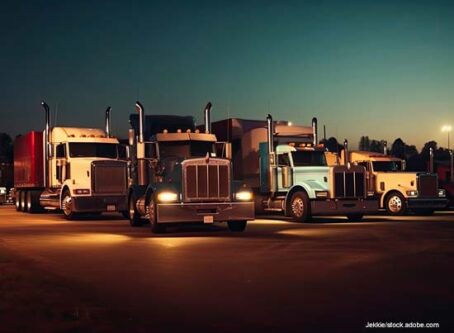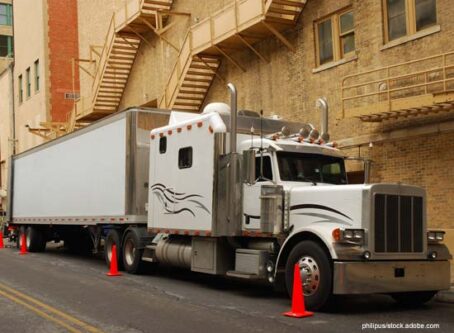TRIP study cites congestion and truck parking as major freight challenges
As the economy continues to grow in the long term, freight will also increase. A new study highlights issues truckers will face that need to be addressed, including e-commerce, congestion, infrastructure and parking.
TRIP, a nonprofit national transportation research group, recently released a study titled “America’s Rolling Warehouses: Opportunities and Challenges with the Nation’s Freight Delivery System.” The study looks into several factors that may cause problems for truckers in the future as freight demand increases.
According to the report, freight will likely increase by 104% in value and 44% by weight from 2016 to 2045. In that same time frame, freight moved by trucks specifically is expected to increase by 91% in value and 41% by weight.
Although more freight is good for business, truckers are likely to come across some hurdles that may disrupt earning potential.
Infrastructure
A crumbling infrastructure will exacerbate issues already present with increased freight, according to the report.
Most notably is traffic congestion. As shippers look for ways to reduce costs, traffic congestion is increasing nationwide. Unreliable and unpredictable traffic conditions make it difficult for shippers to keep down costs.
TRIP estimates that between 2012 and 2045, the miles of major U.S. highways that are congested during peak periods will quadruple from 19,200 miles to 78,500 miles.
In 2016 alone, traffic congestion on major highways created $74.5 billion in additional operational costs to the trucking industry. Trucks were stuck in traffic for 1.2 billion hours in 2016, according to the study.
TRIP recommends increasing capacity to improve freight flow, including general purpose lanes and truck-only lanes when appropriate.
Parking and employment
TRIP mentioned two factors specific to the trucking industry: parking and drivers. More specifically, the lack thereof.
“Providing an adequate number of truck parking spaces along major highways is critical to provide long-haul truck operators with safe and reliable areas to rest,” researchers state. “But a significant lack of adequate truck parking along major U.S. highways reduces the efficiency and safety of freight movement. Tired truck drivers may choose to park at unsafe locations such as highway shoulders, exit ramps or vacant lots.”
The study cites Jason’s Law survey results to highlight the problem. A second version of that survey is underway.
TRIP also claims the so-called driver “shortage” will cause significant problems to increased freight demand in the future. With not enough drivers available for freight for today’s volumes, a similar shortage will be even more damaging with a significant increase in freight.
However, both the Owner-Operator Independent Drivers Association and U.S. Bureau of Labor Statistics state that the driver shortage narrative is a baseless myth. OOIDA has stated over the years that any lack of drivers is the direct result of turnover rates. An easy solution to driver retention is increasing wages, OOIDA contends. The Bureau of Labor Statistics affirms that stance in its study.
Technology
Technological advances have been both a blessing and a curse to freight movement. TRIP’s study highlighted the good and the bad when it comes to technology.
Automation usually has a negative connotation in the trucking industry. Long-haul trucking is expected to be hit first with driverless vehicles, but other types of automation have helped trucking.
Automation in manufacturing and warehousing has increased competition and output, placing more freight in trailers. As technology advances and automation becomes more prevalent, freight is likely to increase.
Similarly, e-commerce has had a mix effect on the trucking industry, TRIP states.
Rapidly increasing popularity of e-commerce means more freight. On the other hand, it also has created what is referred to as the “Amazon effect.” Consumers now expect to receive items within two days, which can cause problems for those doing the shipping.
The study suggests that perhaps of the most significant effects of e-commerce is shipping costs. Companies have to find a way to keep costs down for the consumers while dramatically decreasing the shipping time. To do this, reduced shipping costs will likely be the answer. This could have serious consequences within the trucking industry.
Unfortunately, the drivers will likely be the victims of those consequences, according to the study. Researchers suggest that reduced shipping costs and the so-called “driver shortage” will be addressed by automation.
However, a recent study from the U.S. Bureau of Labor Statistics suggests that this may not become a reality in the near-future.









